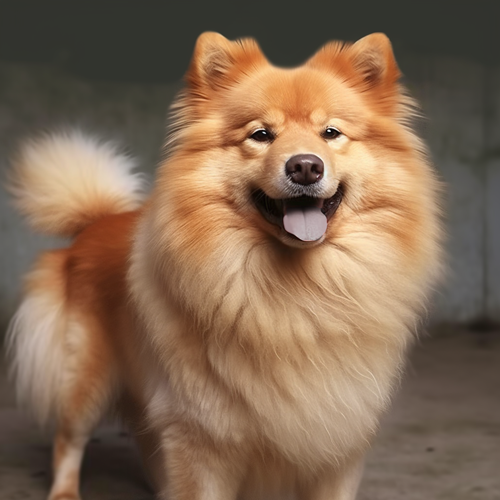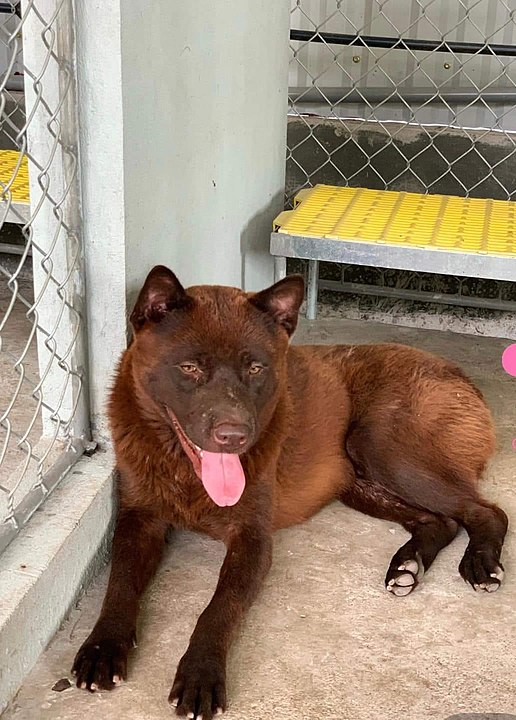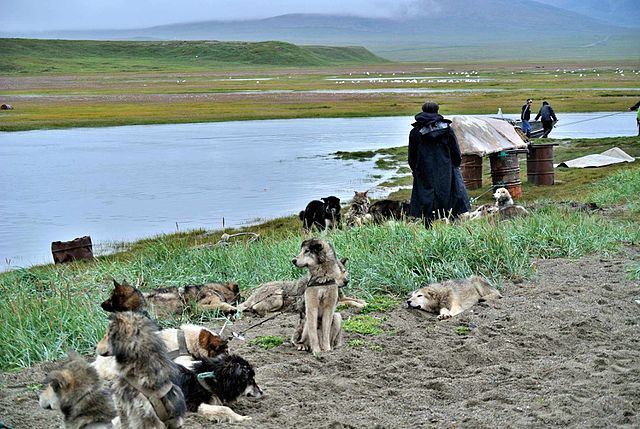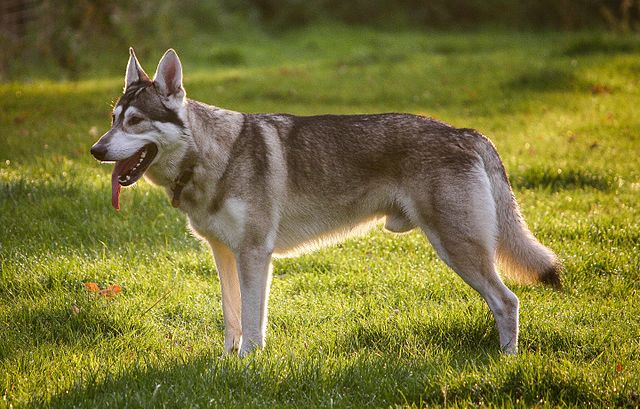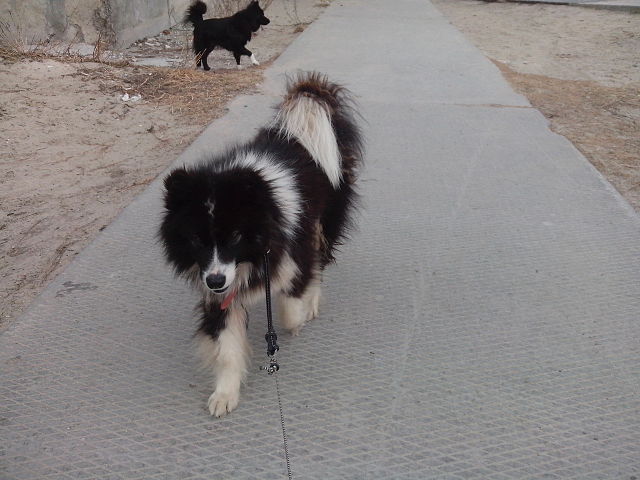The Calupoh is a wolf-hybrid-turned-actual-breed that was created, and recognized, in Mexico. Recognized by the Federación Canófila Mexicana in 1999, it was developed in order to recreate Mexican wolfdogs as depicted in various cultural artwork and stories. The breed has only been around since the 1990’s but has won the hearts of many! With a dignified nature and striking, wolf-like appearance, he can be a great companion for those who fit his unique lifestyle. The Calupoh is agile and athletic and does require daily exercise. And yes – he does howl!
The Calupoh is a large and leggy breed with a medium length double coat. This coat is rough textured on the outside while the undercoat is soft and plush, and a short mane on the neck is a distinctive feature. In terms of color, black or smoky black are the preferred colors although some dogs will be born silver, white or sable. These colors are accepted but not preferred. The ears are always erect and should be placed at an angle between 85 and 95 degrees, with the middle line of the eyes as the axis. This is part of the reason why the breed looks extra wolf-like. To add to the wolfy appearance, the eyes are very often a light yellow color (although dark eyes can appear).
Properly-raised Calupohs have even temperaments around their owners although many are very suspicious or even skittish around new situations. They can take a very long time to warm up to strangers and will often be extremely aloof (like a wolf). Their initial tendency when they are afraid is to back away or even run away. This means lots of early socialization is critical – and should be done on-leash (so they can’t dash too far) and with plenty of patience and understanding! Most are good with other dogs/pets and kids that they know as long as they were raised with them, although they may not be friendly with strange dogs. Take note this is not a guard dog and an owner will likely fail miserably trying to train one to fulfill this role.
During puppyhood and adolescence, the Calupoh can be destructive and may be prone to chewing up human belongings. Being fairly mouthy, he may also try to gnaw on on people as well! This is normal behavior however should be dealt with early in development so it doesn’t become a bigger problem as the dog matures. It is not a sign of aggression but rather just the breed’s mouthy tendencies.
The original kennel wherein all Calupohs stem from is called Criadero Caliente. All descendants therefore will go back to dogs from this kennel/breeder. Why is this important? It means that not every wolf-looking dog is a Calupoh, and a smart buyer should be sure to verify the pedigree before purchasing a puppy. Like similar breeds with recent wolf inclusion (such as the Czechoslovakian Vlcak and the Saarlooswolfdog), this is not the same thing as a random wolf-hybrid! Thousands of dogs went into the development of this breed so that it could be “come to be”, and the breed was put together with a lot of work, forethought and care. The same can’t necessarily be said for hybrids, which can be unpredictable in temperament and other traits.
The Calupoh needs ongoing training in order to be the best he can be. When training lessons are consistent, encouraging and fair the breed enjoys learning! Keep in mind that while this breed often loves to spend time with his owner, he is naturally independent-minded. This means that he is neither overly affectionate, nor is he a dog that lives to work. He wasn’t created in order to work with people so while he can (and should) be taught obedience, he might not be a star pupil. Some humans get dogs expecting them to provide endless affection and to have great desires to learn commands. That is not the typical temperament of this breed. The characteristic relationship between an owner and a Calupoh is one based on mutual respect and silent loyalty rather than one of exaggerated friendliness and perfect obedience scores. This is an important consideration for a prospective owner!
Calupohs require time and patience to raise, and despite being independent they do need plenty of owner interaction and care. A dog of this breed just left in the backyard all day will not bond with his owner, and may even become nervous around him/her! For this reason it is important that an owner spend a lot of time at home during not only puppyhood but the dog’s entire life. This is NOT a dog that thrives with owners that work all day. In addition, they require a home with plenty of room for them to move around and a securely fenced yard as they are escape artists. They aren’t generally difficult dogs to live with (after they get over the destructive phase) as they aren’t clingy, hyperactive, overwhelmingly needy (or even dirty) but they do need a specific type of owner/home.
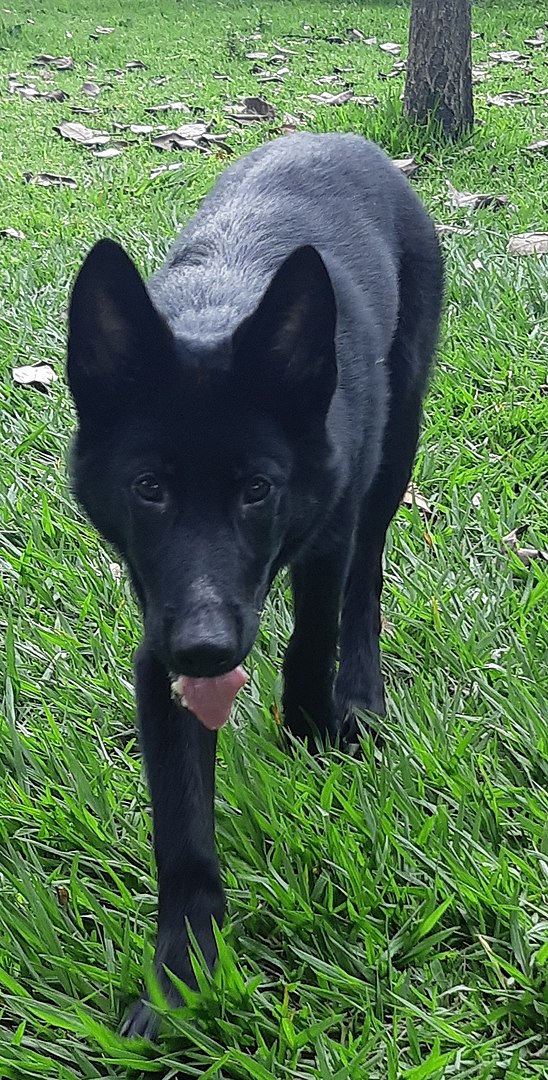
Photo By Jenniffer1987


